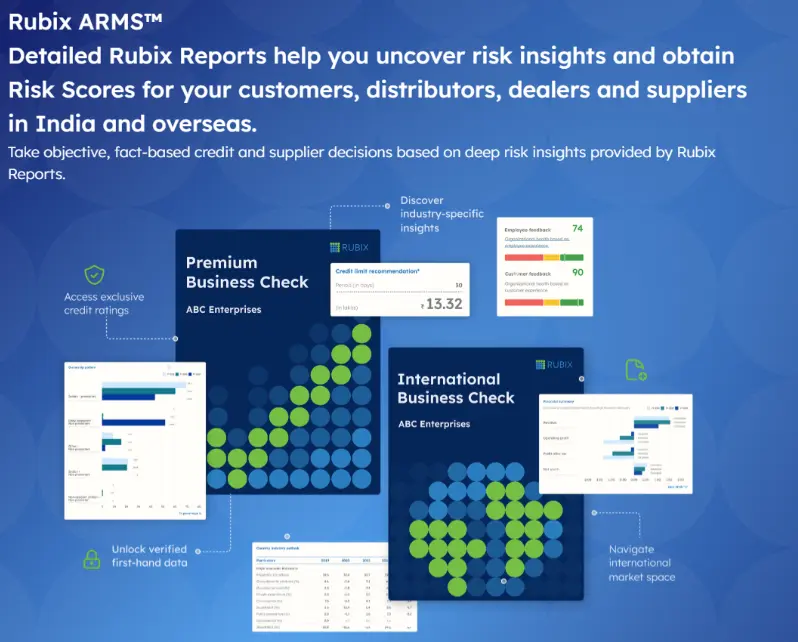Risk – art or science? While arriving at probability default and recovery rate are based strictly in mathematical models, the variables and assumptions that rule the model are derived from the creative process of critical thinking. And with a large part of lending focused on predicting the future, no person or machine can do so without errors. This creates room to play with subjectivity, and thus partly approach lending as an ‘art form’.
Moreover, when lending to small businesses at the invoice level, the scope for ‘artful thinking’ widens. As MSMEs are less likely to be similar and also navigate an extremely dynamic landscape by being highly vulnerable to external shifts. Given this context, here are some ways to approach credit with flair.
Read Also – Transforming MSME Credit Access: A Shift in Risk Assessment
GST data can be key to effective credit-monitoring
Loans, unlike a biscuit or a computer, require to be ‘returned’ after ‘purchase’. For repayment to be successful, credit monitoring becomes as important as the initial credit assessment. This requires observing the borrower even after disbursement. Here, annually filed statements are not enough. Hence, a creative source for recent and frequent historical data is GST records. With consent from the borrower, the lender can observe transactional level data, received at a quarterly or even monthly frequency. This allows for new variables to be included in assessment and monitoring. Imagine a small automobile parts distributor, GST data on this MSME would provide new insights on seasonality, discrepancy in purchase amount and amount debited from bank, share payments made in cash (and thus harder to trace and track), etc. This helps the lender better mitigate risk. And most crucially makes borrowing more affordable to the small business. Operating on slim margins, the inclusion of more diverse data points helps the small business to borrow without falling into a trap.
To repay loans, the intent is as important as the ability
While the previous point relied on data, there is much that cannot be perceived by numbers. Or rather, even if it can, it requires a human’s intelligence to interrogate. This relates to decoding not just the borrower’s ability to pay back but also their intent. While it is quite cynical to assume that this might be the case, it must be considered. As the function of risk management is to successfully minimize all losses. The first, obvious aspect to track is the repayment record of the business. Going back to the previous example, if there are instances of the automobile distributor making loan payments even when times are hard, it helps build a positive case for their intent. Now, intent can always change. For further assurance, the lender can examine the distributor’s trade dependence. If 50% of the distributor’s sales is attributed to single retailer, then the distributor will be more attentive to this relationship. Thus, making it a good transaction for the lender to fund. Thus, fortified credit decisions are gotten from looking at a business in a more personal capacity.
Lending will always be risky when there’s no risk culture
It is crucial for an organization that lends or enables lending, to create a clear distinction between having a risk team and a risk culture. While we are all clear on what the first entails, building a risk culture must consider the entire organization’s commitment to be proactive rather than reactive to risk. Or to put it shortly, risk is everyone’s responsibility. To understand how let’s look at the role of the account manager, who communicates closely with the borrowing business. Say the account manager learns the owner is splitting the business to resolve an internal conflict. Since this event predicts a stressful future for the business, the account manager must alert the risk team of the same. Here, the account manager acts as the first line of defence, while the risk team, second. Thus, it is important to understand that the warning signs of risk can exist out of context, hence making a risk culture critical to well-rounded risk management. While these three methods have been developed to better lend to small businesses, the philosophies are just as applicable to other lending scenarios. The ability to think of risk as an art, helps reinforce existing processes. In considering the nuances of borrowing and lending, it paints a messier but fuller picture in the end.
At Vayana, we understand that building a true risk culture goes beyond frameworks—it’s about empowering every stakeholder. Learn how our approach helps lenders and borrowers make smarter, safer decisions.








